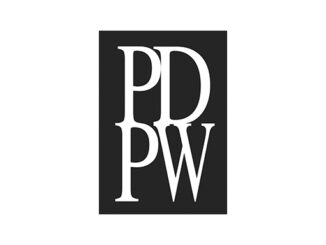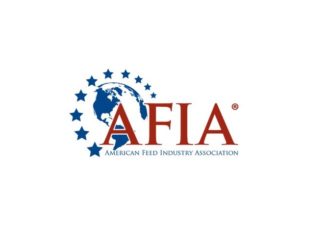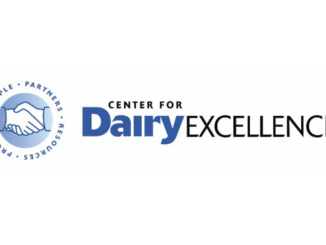
Description of in-feed medications and how they fit into the Veterinary Feed Directive (VFD) rules set forth by the Food and Drug Administration (2017).
We are very lucky in this country to have a group of educated, informed individuals ensuring the safety of our food supply. Recent efforts by the Food and Drug Administration (FDA) Center for Veterinary Medicine have addressed reducing the use of “medically important” antibiotics in feeds given to food
This regulation is specific to the feed or water supply containing the VFD drug, not to the type of animal that consumes the feed. The same regulation applies to dairy, deer, and ducks. No animals are excluded. The regulations will affect all livestock producers who wish to purchase feed-grade antibiotics, regardless of operation size, as of January 1, 2017. Single animal owners and CAFOs (Concentrated Animal Feed Operations) fall under the same directive from the FDA. Keep in mind that extra-label use of feed-grade antibiotics is not acceptable.
VFD orders have an expiration date and may indicate they are good for repeated purchases but may not exceed 6 months. Similar to a prescription, those “refills” will be limited. Education and understanding will fall on all animal owners, regardless of operation size or age. Livestock owners will have to be proactive to prevent “gaps” in their feeding practices created by running low on medicated feed only to discover that the VFD has expired. Check your labels now for medically important drugs. These regulations reach into water-soluble drugs that are transitioning from OTC (over-the-counter) to prescription (Rx).
Hobby farmers or smaller operations associated with some 4-H and FFA participants may feel the impact of the regulations more than larger producers, because smaller producers often obtain veterinary assistance only when there’s a medical problem. Veterinarians who are already stretched too thin across some areas of Pennsylvania will have to make some adjustments for the increased VFD demand. The positive impact will be greater attention and understanding surrounding the use of medicated feeds and more responsibility on the part of each animal owner to document medication use. The negative impact is the possibility of an increase in the number of sick and even dead animals, especially where medicated feeds are a vital part of disease prevention.
Many 4-H and FFA participants have been advised to raise their animals using a preventive approach. Instead of waiting until animals get sick, the animals are fed antibiotics during periods of stress when they are most likely to get sick. Young animals are very susceptible to diseases when they are in the primary stages of life. Early in the infection progression, it can be difficult to detect the sickness and treat it in time to save the animal. This becomes a biosecurity issue as efforts will have to be stepped up to keep disease from spreading within the farm and to other farm families.
Inexperienced youth producers may be less likely to notice a disease in the early stages when a cure is most easily accomplished. Details such as reduced appetite or a listless gait could indicate the early onset of illness. Not all 4-H and FFA participants have the experience or observation skills to recognize these details. Even families who know what to look for may find themselves in the “weekend window” or “holiday hold” where quickly obtaining a VFD or medicated feed order will be next to impossible.
Effective January 1, 2017, a Veterinary Feed Directive (VFD) Order must be presented to purchase feeds containing the medications in Table 1.
| Established Drug Name | Examples of Proprietary Drug Names |
|---|---|
| Avilamycin* | Kavault |
| Chlortetracycline (CTC) | Aureomycin, CLTC, CTC, Chloratet, Chlorachel, ChlorMax, Chlortetracycline, Deracin, Inchlor, Pennchlor, Pfichlor |
| Chlortetracycline/Sulfamethazine | Aureo S, Aureomix S, Pennchlor S |
| Chlortetracycline/Sulfamethazine/Penicillin | Aureomix 500, Chlorachel/Pficlor SP, Pennchlor SP, ChlorMax SP |
| Florfenicol* | Aquaflor, Nuflor |
| Hygromycin B | Hygromix |
| Lincomycin | Lincomix |
| Oxytetracycline (OTC) | TM, OXTC, Oxytetracycline, Pennox, Terramycin |
| Oxytetracycline/Neomycin | Neo-Oxy, Neo-Terramycin |
| Penicillin | Penicillin, Penicillin G Procaine |
| Sulfadimethoxine/Ormetoprim | Rofenaid, Romet |
| Tilmicosin* | Pulmotil, Tilmovet |
| Tylosin | Tylan, Tylosin, Tylovet |
| Tylosin/Sulfamethazine | Tylan Sulfa G, Tylan Plus Sulfa G, Tylosin Plus Sulfamethazine |
| Tylvalosin* | Aivlosin |
| Virginiamycin | Stafec, Virginiamycin, V-Max |
* VFD drug prior to January 1, 2017.
Apramycin, Erythromycin, Neomycin (alone), Oleandomycin, Sulfamerazine, and Sulfaquinoxaline are also transitioning to VFD status; however, they are not marketed at this time.
When a VFD drug is used in combination with a non-VFD drug, the feed would require a valid VFD prior to distribution to or use by the end-user.
Some medications will not require a VFD at this time, as shown in Table 2.
| Established Drug Name | Examples |
|---|---|
| Injectable medications | No injectable products affected |
| Ionophores | Monensin (Rumensin) |
| Anthelmetics | Ivermectin, Fenbendazole (Safeguard) |
| Beta agonists | Ractopamine (Paylean) |
| Coccidiostats | Decoquinate (Deccox) |
In situations where a combination of a medically important drug and a non-medically important drug/hormone are fed together, a VFD is required. Example: Cattle feed with Rumensin and Tylan together in the same bag will need a VFD, whereas cattle fed with just Rumensin will not need a VFD.
References
- Food and Drug Administration Center for Veterinary Medicine. (n.d.) Antibiotics in Feed: An Exhibitor’s Guide to the Veterinary Feed Directive. Accessed December 8, 2017.
- Pennsylvania State Department of Agriculture. (2016) VFD Notice. Harrisburg, PA: Author, David Dressler. Accessed August 11, 2016.
- Texas A&M Agrilife Extension. (2016) Veterinary Feed Directive (VFD) Rule. Accessed December 8, 2016.
- United States, Department of Health and Human Services, Food and Drug Administration Center for Veterinary Medicine. (2013, December). Guidance for Industry #213. Accessed December 9, 2016.
- Veterinary Feed Directive. (n.d.) Accessed December 8, 2016.





Be the first to comment